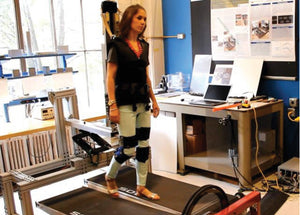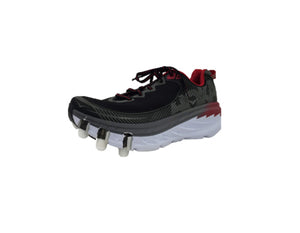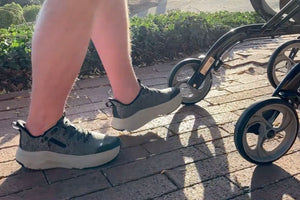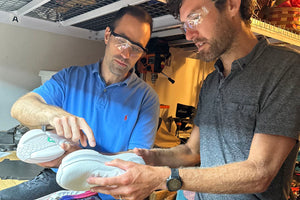Cart
Your cart is empty
Looks like you haven’t added anything yet, browse new arrivals below!
Continue ShoppingDiscover how variable friction technology can enhance walking and mobility for your clients. Learn practical cues to incorporate into your therapy sessions.
In this video, Dr. Tyler Susko explains the innovative technology behind Cadense Adaptive Shoes and how it benefits clients experiencing walking difficulties.
This video provides specific instructions for physical and occupational therapists on how to cue your clients when they start walking with Cadense Adaptive Shoes.
Cadense Adaptive Shoes are for anyone who struggles with foot clearance during the swing phase of walking. If a client has difficulty advancing the foot forward, the shoes allow them to slide if needed before regaining traction when weight is applied. We’ve seen these shoes work well for people with such difficulties due to stroke, Multiple Sclerosis, Parkinson’s, Peripheral Neuropathy and general weakness in the leg.
These shoes were developed with therapy in mind, as a practical implementation of the Skywalker system, such that people could access more frequent movement practice at home and in the clinic. We have seen improvements when people use these shoes as a training tool. However, in all of our tests, we’ve seen an orthotic effect, that is, an effect of using it as an assistive shoe for everyday use.
The sliding feature need not be used to consciously alter movement, it can simply be something that helps if your client accidentally contacts the floor during swing, allowing the foot to travel under their body instead of getting hung up on the ground as it would with high-traction footwear.
In our Beta test, we had people walk for at least 10 minutes per day, at least 5 times per week for one to six months. We found that people who took training seriously, could increase the amount of time spent walking with the shoes. Specifically, one user with stroke started barely able to do 10 minutes and ended doing 40 minutes per day with noticeable calf growth on the affected side.
The ongoing clinical trial is asking people to walk at least 30 minutes per day, 5 days per week for 12 weeks. The 30 minutes can be broken up into as many smaller chunks as needed to get to the full 30 minutes.
The progression we have been successful using is as follows:
For more helpful videos, please visit our 5-day video getting-started series here: Getting started with your Cadense Adaptive Shoes
The development of Cadense Adaptive Shoes began over a decade ago, led by research teams at MIT and UCSB. Initially inspired by the MIT Skywalker, a pioneering robotic system for gait rehabilitation, the shoes were designed to help patients with neurological conditions improve their walking mechanics. Early research demonstrated how separating rhythmic and discrete movements during walking could reduce gait irregularities, a concept central to Cadense's variable friction technology.

Developed to train walking using a split-belt treadmill that minimizes interaction forces, helping patients walk with more rhythm and ease. Early research demonstrated that the removal of ground contact forces during the swing phase of gait could improve gait rhythmicity and ease of walking, a concept central to Cadense’s variable friction technology built into every shoe we offer.

The team, now collaborating with Stanford’s Dr. Elliot Hawkes, created over created over 30 different versions of a shoe that could replicate the reduced ground interaction forces during swing, before settling on a variable friction concept. Testing with people affected by conditions like multiple sclerosis, brain tumor removal, and cerebral palsy revealed that variable friction shoes reduced hip circumduction and improved walking speed after only two minutes of use for some users.

With 13 participants confirmed safety and suitability outside of a laboratory setting. Some users reported therapeutic benefits after long-term use.

In 2022, the Shirley Ryan Ability Lab agreed to evaluate a pair of shoes with 8 stroke patients. The response from users was overwhelmingly positive, with 7 of 8 patients responding that they’d like to purchase a pair after trying in a session. Comments such as: "Yes I would definitely purchase this shoe, its functionality and ease of fit are definitely game changers" and "Yes-because its easier to walk without the full AFO brace".
In 2023, the Shirley Ryan Ability Lab teamed up with UC Santa Barbara and Cadense to write a grant that was funded by the National Institutes of Health (NIH) for an ongoing 4-year clinical trial for stroke patients. Upcoming studies will focus on conditions like Parkinson’s, multiple sclerosis, and myositis to further validate the shoes’ therapeutic impact.
Looks like you haven’t added anything yet, browse new arrivals below!
Continue Shopping